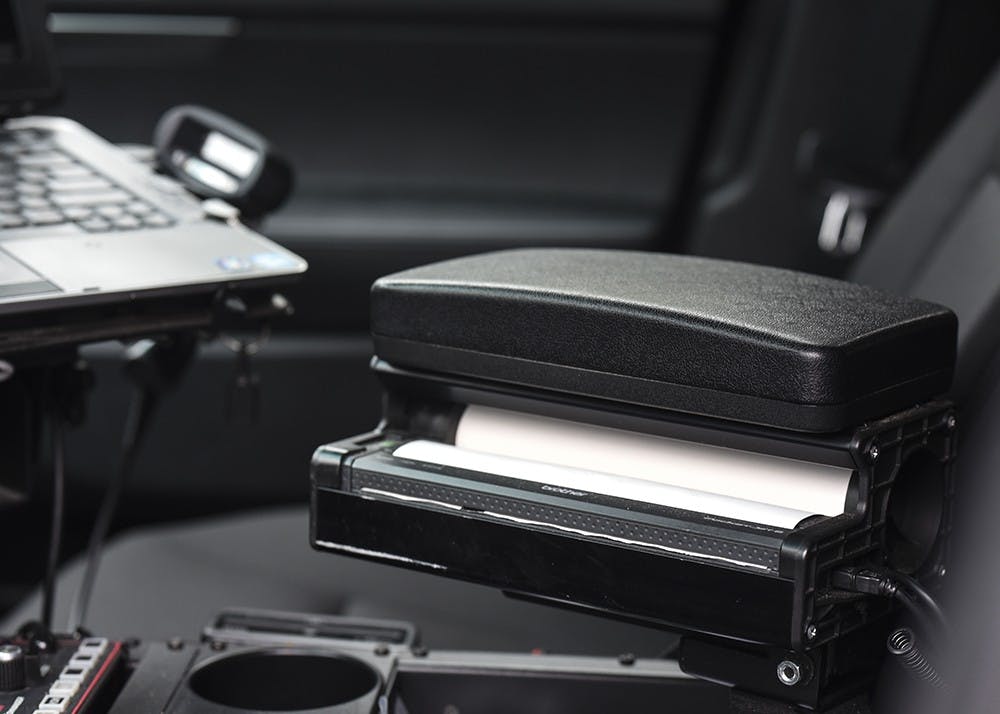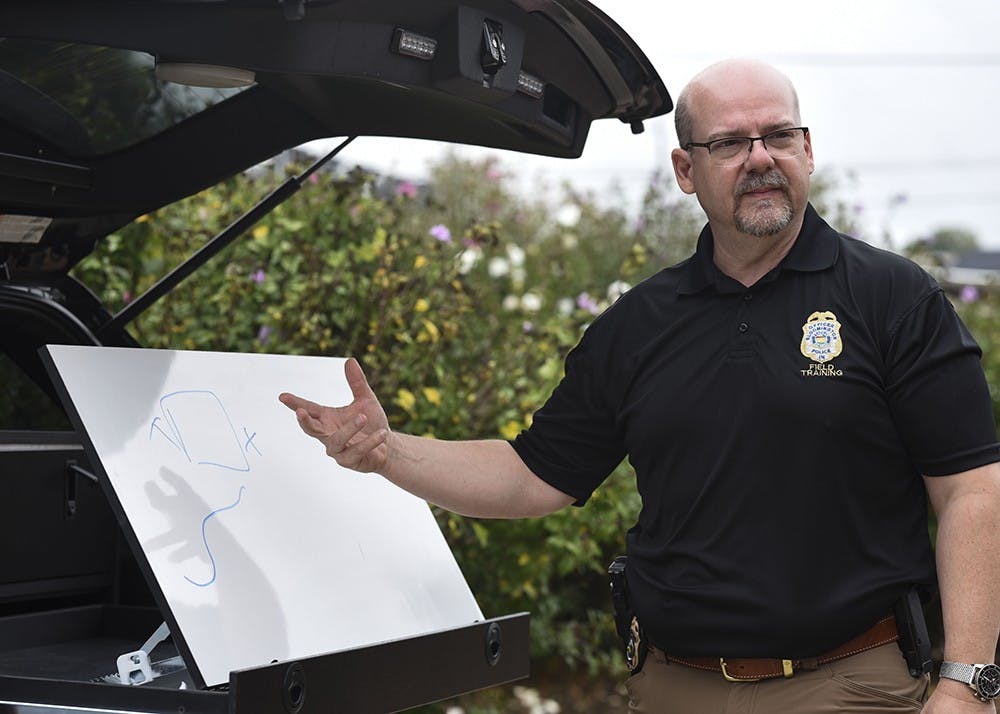The workspace of a police officer does not look like it did 20 years ago, said Captain Steve Kellams of the Bloomington Police Department.
Now, an office not only sits within the four white walls of a police headquarters. It drives around town.
“That’s what modern policing has become,” Kellams said. “Our office has become our police car.”
Kellams said each police car is equipped with radios to communicate with other officers and printers to print tickets and case report information on the go. They also have laptops with internet access so that officers can access information about calls and schedules for where they need to be at a certain time.

A program called Street Smart on the laptops allows officers to send and receive bulletins, blogs and updated information in real-time. Getting out information faster makes officers more responsive to calls and accelerates the process of investigating and charging a criminal by days, Kellams said.
“It takes the old police officer notebook and shares it with everybody,” he said.
In the trunk of the police car sits a case with multiple drawers, similar to a dresser. There is a drawer for rifles, a drawer for ammunition and a smaller drawer for flares.
Above the drawers, there is a retractable white board marked by a blue dry erase marker. Kellams said the board is to help officers plan field work, especially when responding to unpredictable cases.
“The old days of coming back to the office are over,” he said. “Now, thanks to technology, everything you need is right here.”
Kellams said an office on wheels saves officers transportation time. It also means they don’t have to come down to the police headquarters to type and file every case report — a process that would take them away from the field and cut from patrolling time.
At a Bloomington City Council budget meeting last month, BPD Chief Mike Diekhoff explained concerns about space. As the department grows, the headquarters have shrunk, he said.
He told city council that the BPD had converted any free space into offices.
“We’ve pretty much carved out any closet we can find to make an office,” Diekhoff said.
Kellams said having offices on wheels can serve as a temporary solution to space problems.
But getting equipment into police cars isn’t a one-step process, Kellams said. Each piece of equipment has a different shelf life, including radios, which need to be replaced every five to six years.
The BPD bought a set of new radios in May when its old ones from five years ago began to fail. At around $4,000 a piece, he said approximately 100 radios made a large dent in their annual budget.
Susan Sandberg, president of city council, said the initial price tag and replacement costs for equipment like radios, police cars and the equipment they carry can run up a large bill.
Kellams said the clear solution was to set up a gradual replacement schedule based on the shelf life for each piece of equipment.
“So, we’d replace 10 to 20 radios a year, instead of 100 all at once like we did,” he said.
Kellams said the schedule will also help the BPD plan spending for the future instead of having unplanned expenses when equipment starts to fail. It would also help avoid cutting other things from its limited budget to make room for increases in equipment costs.
“There’s really no room to play around with money, so when you take a hit, something else has to go,” he said. “This way, we don’t have to sacrifice as much to keep our equipment running.”
Sandberg said this is not the first time the BPD has thrown the idea around. She said she’s happy the department is making leeway in setting up a schedule for equipment replacement.
“It is always best to have a gradual replacement plan for sustainability in making sure vehicles and other costly gear are replaced incrementally and operating at their best,” she said.
While the plan will help the BPD save money, Kellams said it will also help the department continue to modernize their cars and equipment.
As technology rapidly advances, Kellams said the department's radios will be outdated by next spring. But the BPD would have to wait another five to six years for the radios to fall apart before buying new, more modern ones.
He said replacing radios and other equipment bit by bit allows the BPD to adjust to technological changes and buy the best equipment to suit the department's needs at any time.
By converting police cars into office spaces and keeping them stocked with up-to-date, working equipment, Kellams said they are making it that much easier for officers to do their jobs and serve their community.
“We have to make sure we’re staying as close as we can to that cutting edge of technology,” he said. “We need to give our officers all the tools they’ll need.”





